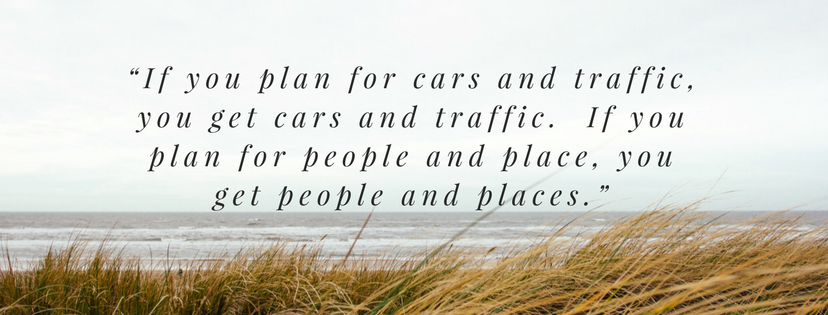
“Planning & Shaping Cities” is a blog by AJ Fawver. Read all of AJ’s posts from the “Planning & Shaping Cities” blog here.
Last week I was driving into an area which connects a highway to the urban downtown. I was struck by the drag strip nature of the traffic entering and exiting the district. I counted on one hand the number of pedestrians, and with the traffic was moving so quickly, I could understand why.
I happened upon a Facebook discussion, later in the week, in which citizens of another community were lamenting the lack of a functioning transit system.I also happened a picture posted by a friend that show new metal street furniture installed along a city sidewalk where during the summer temperatures regulary exceed 100 degrees.
And, last night, I visited an acquaintance in a town home surrounded by at least 30 other town homes that looked exactly the same.
These experiences makes it impossible for me to ignore the voice in my head asking: what if we designed elements of our communities for the needs and desires of people who want to occupy them, rather than for the lowest cost.
Yes, many zoning ordinances address the need for uniformity and consistency. I’d pose this question: if something isn’t working, then isn’t it just uniformly or consistently bad?
William H. Whyte, famous for his study of human behavior in the city and his Street Life Project, believed that,
“If you plan for cars and traffic, you get cars and traffic. If you plan for people and place, you get people and places.”
Now is a time to reminding ourselves that we need to be cognizant of the effects our projects have on our community. How often do we truly take the time to evaluate function, rather than crossing a project off the list and moving on? I would venture to say it isn’t nearly enough.
I worked with a councilor who once said to me that he approached every decision by reminding himself that people of the community – himself included – must live with that decision, and the impacts. This is not to say that every decision must only be reached after a crisis of conscience and a meticulous weighing of pros and cons.
However, we must remember the way that people will use what we have created. We should create in ways that invites usage.
Circling back to the beginning…
- Speeding traffic through a downtown – creating an uncomfortable place for pedestrians and cyclists (who are also patrons!) to linger.
- Traffic stops which are not ADA accessible, do not have a place to sit out of the elements – creates an uncomfortable (and unsafe) place for riders to access and wait.
- Street furniture which absorbs heat in a place known for heat, without shade – creates a place no one wants to sit.
- Housing with a monotonous design, where differentiation between units is indiscernible – creates a place no one wants to live or visit.
I’m sure all of these efforts had a reason behind them, and perhaps even some good intentions. Nevertheless, would we call them successes? I assert that we would not. I challenge us to be more observant of the way people use space.
Being more attuned to citizens makes us better at the work we do. After all, people are attracted to other people, places that are vibrant, and environments that are attractive.
I think William H. Whyte really hit the nail on the head by writing:
“It is difficult to design a space that will not attract people. What is remarkable is how often this has been accomplished.”
Wow. If that doesn’t get us fired up to raise the bar for the spaces we creates, I don’t know what will. Quality matters. We’re all in this together, folks.
